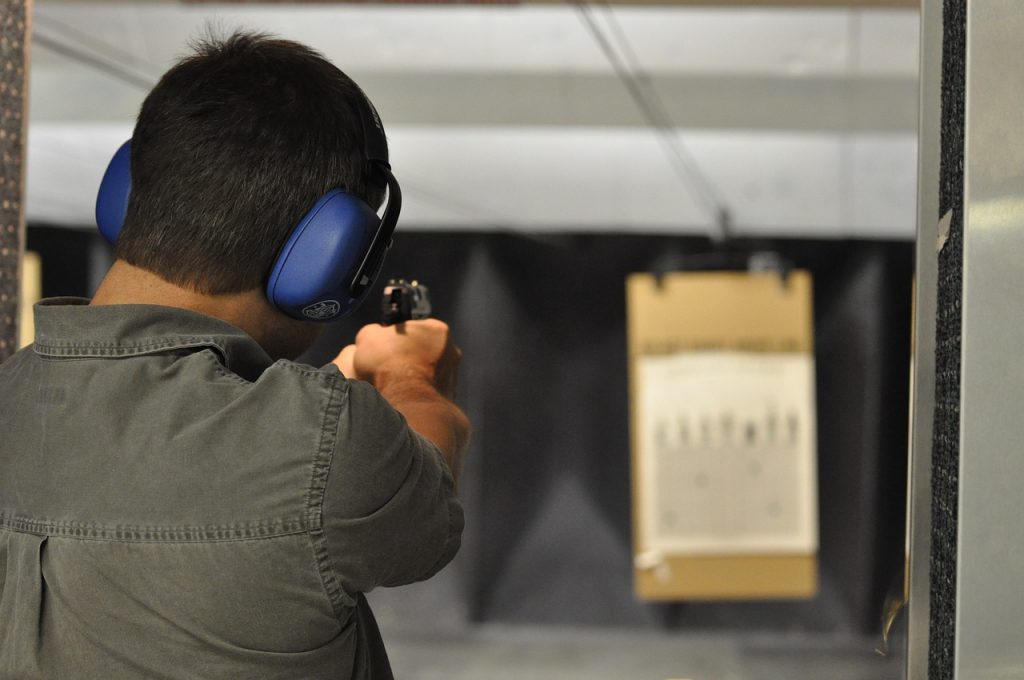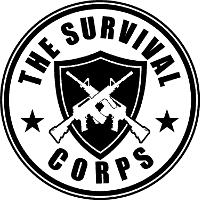When met with a scary decision to choose your life over that of a terrorist, you are most likely to shoot back. Firing away from the target in this situation will cost your life so you’d better aim right.
There’s no best way to do this than to learn how to handle handguns. This isn’t limited to students because self-defense in modern society requires every person in their sane state of mind to defend themselves when encountered with such circumstances.
Learn basic rules of gun handling
Basic knowledge is the foundation for understanding important concepts right from the grassroots up to what builds it. Learning the four basic gun-handling principles ensures you get to know how, when and why you have to handle a gun.
Begin by identifying the weapon and ensure it’s always loaded before placing your finger away from the trigger. If you’re sure of the target, aim the firearm towards them and, if not, ensure it remains holstered. Lastly, ensure you know the target’s backstop to prevent the uneven projectile of the bullet. If you have no clue of what lies behind them, then don’t shoot.
Learn how to grip the gun

Getting the proper grip of a firearm allows it to function effectively and reduce malfunctioning because of poor grip. This ensures you get to steadily aim at the target and shoot with ease.
First-timers are required to use both hands when handling handguns. Begin by holding it with the dominant hand, then align the trigger finger to the barrel. Place the other hand in the space on the opposite side where you’re holding the gun. Ensure that both thumbs align on opposite sides
Avoid placing your finger on the firing pin and that your hand isn’t placed beneath the magazine. This prevents it from getting thrown off.
Always have a handgun instructor
Ensure an instructor or an experienced friend or family always accompanies you whenever you try to handle a gun, as written in one of the case study writing help reviews on a self-defense area at uk dissertation. You’d better pay for one rather than having to pay for a lawsuit when you end up shooting at wrong targets. It’s much easier and way fun when you know what you’re doing and is headed in the right direction.
They’ll equip you with new tactical means to make you want to discover more about the shooting. Alternatively, you’d have wanted to try out how they shoot in the movies. For that, an experienced gun handler will help you towards being great.
Align your trigger finger seamlessly
This is the most important part of learning how to handle a gun since it determines whether you save yourself from danger or cause danger down upon you. Learning how to squeeze the trigger finger will only turn out to be successful once you have a firm grip on the gun and a target in sight.
Trigger the gun using the middle part of your finger that’s just before the first joint. Using the tip or crease of the finger causes the recoil force to shift direction and you’ll miss hitting the target.
Shooting a handgun at a solid stance
No matter how good you’ve turned out to be at gripping, targeting and triggering a gun, you can’t achieve success without a solid stance.
It comes in three different types, an isosceles stance that provides comfort through the natural positioning of your body. And then the fighting stance that enhances effective firing from any weapon. These two are often used by experienced personnel.
Weaver stance that controls weapon recoil making it mostly preferred for beginners. As a beginner, you start by blading your body, placing your foot towards the target, and shifting the support side in the firing direction.
Understanding the magazine mechanism
You need to refill the gun with ammunition once the old ones run out. A detachable magazine found in most rifles and pistols requires refilling it manually or using a clip then loaded back to the gun. It works by moving cartridges in it to a suitable loading position by the barrel chamber through the action of the firearm.
Ensure you seek safety before loading the gun when encountered by a life-threatening situation. Then go ahead and take deep breaths before getting back on the shooting range.
The type of ammunition to use
The larger version of small pistols are easier to handle and they don’t end up hurting your hands as a beginner. This shouldn’t be the primary factor that bases the gun you should use. To enhance effective performance, pick a medium-sized gun that suits your body stature and the size of your hands.
You aren’t limited to pick the larger 9mm gun if you are a person that prioritizes comfort. The smaller ones you can choose from are the 38 caliber and 22 caliber guns depending on how effective you want your shot fired. Never underestimate the power of the small guns because they have a powerful recoil effect.
Learn how properly to holster the handgun
Holstering a gun keeps it on hold to prevent unnecessary movement to a position easily accessible to the enemy. It’s important to keep the gun safe to prevent you from losing it and ensuring you easily access it.
A good holster attached to belts, waistbands and others at the ankle enables you to make use of your dominant hand swiftly in cases where the use of a gun is required.
Some find it efficient to use shoulder holsters while others use waistbands due to their significant ability to prevent you from getting disarmed. Find what best suits you and stick to it for better performance.
Knowing firearm laws
Different places have different set rules on the usage of firearms, which should always be at the back of your mind each time. Hunting grounds use reasonable gun laws such as not shooting within 200 yards close to any building and not getting drunk or having alcoholic drinks on site.
Take active precautions whenever you use handguns because the slightest mistake can lead you to cause harm to those around you. Ensure you remain vigilant in following the rules to avoid getting into trouble.
Gun range etiquette
This crucial field requires a good code of conduct before having the responsibility of handling a gun. Get to know the general terms used, such as firing line, downrange, hot and cold, backstop, lanes, and range. Some fundamental safety tips to note are your surroundings, intention of firing, and the way to handle a gun.
Another important aspect is the dressing code. Wear closed shoes, and avoid V-neck shirts and always ensure your hair is neat to prevent distractions.
Conclusion
Every student handling a firearm or aspiring to have one should always keep in mind that it’s a self-defense tool and not fun. This should be their driving force before hiring a handgun instructor to take them through this journey. In the end, you’ll achieve safety once you follow the set guidelines and rules when handling a handgun.
